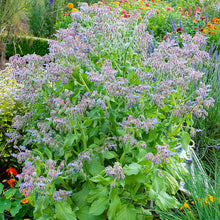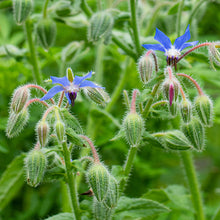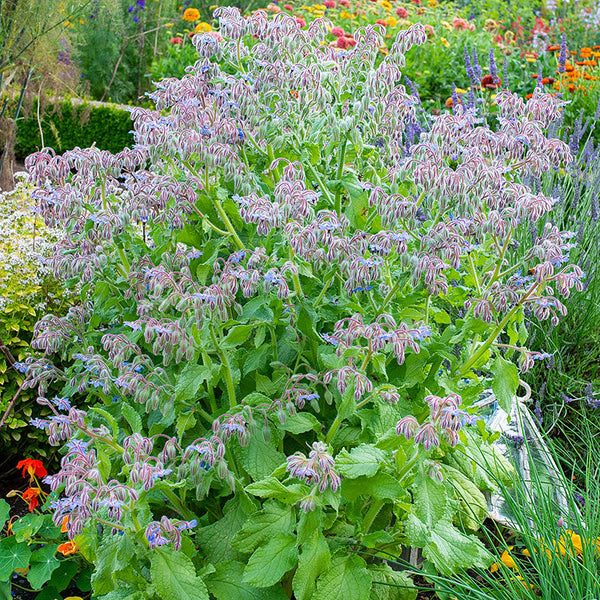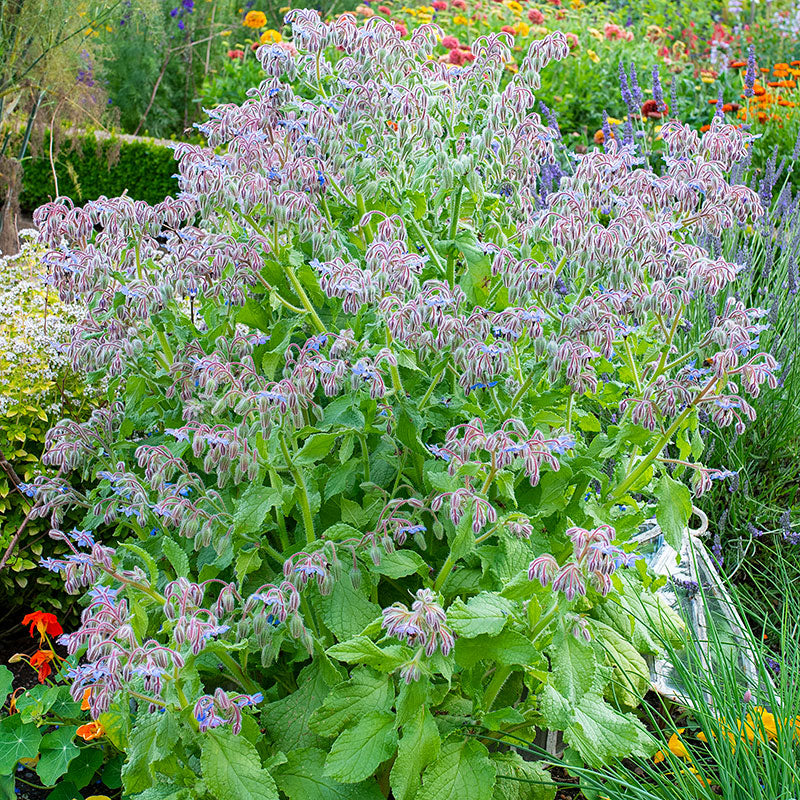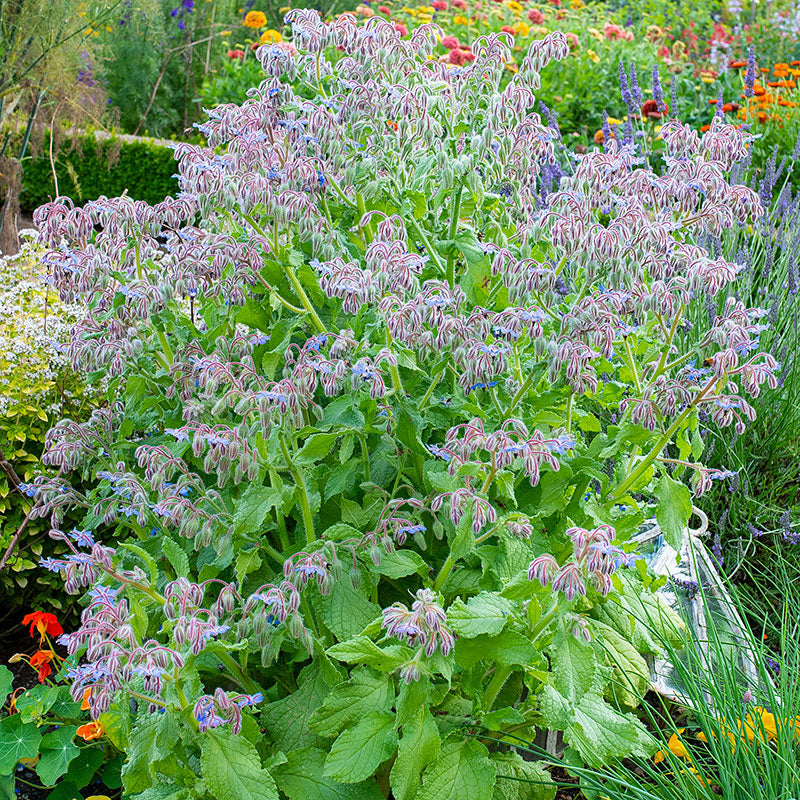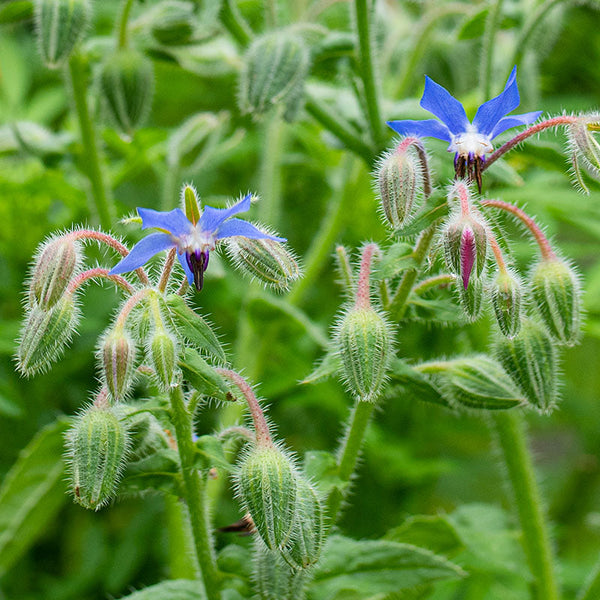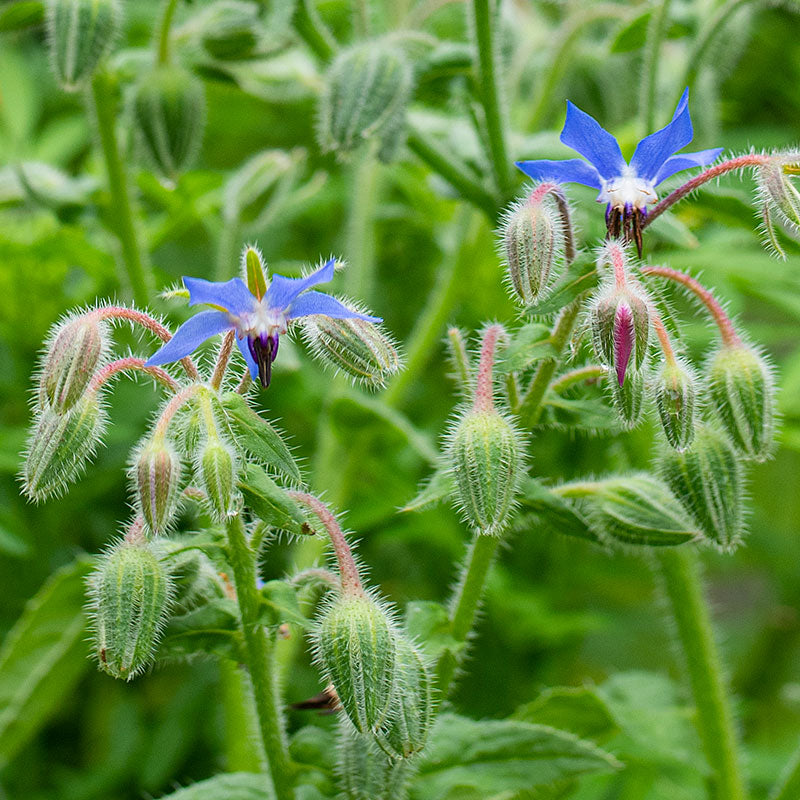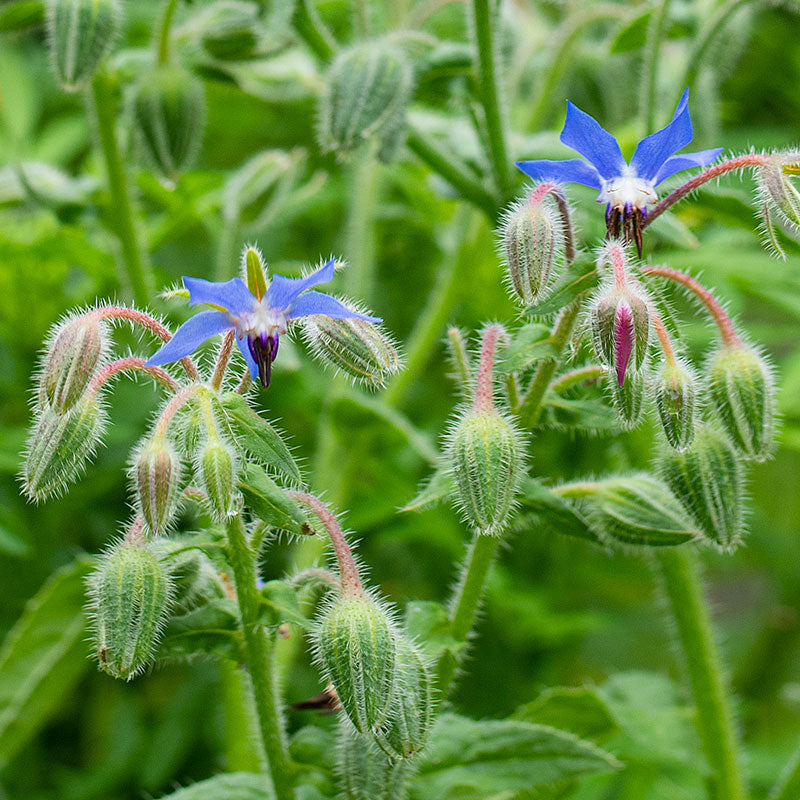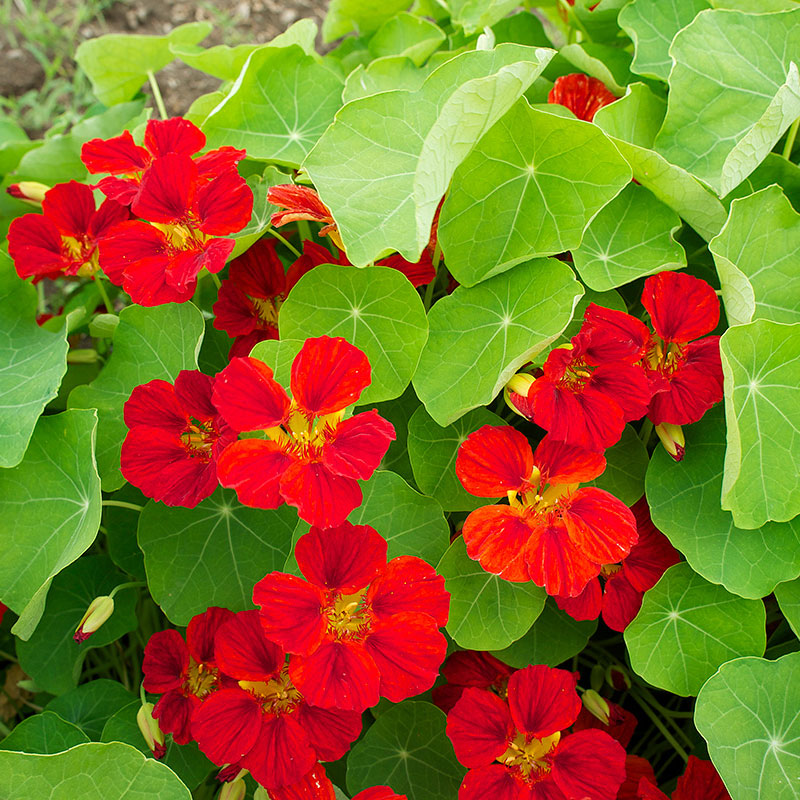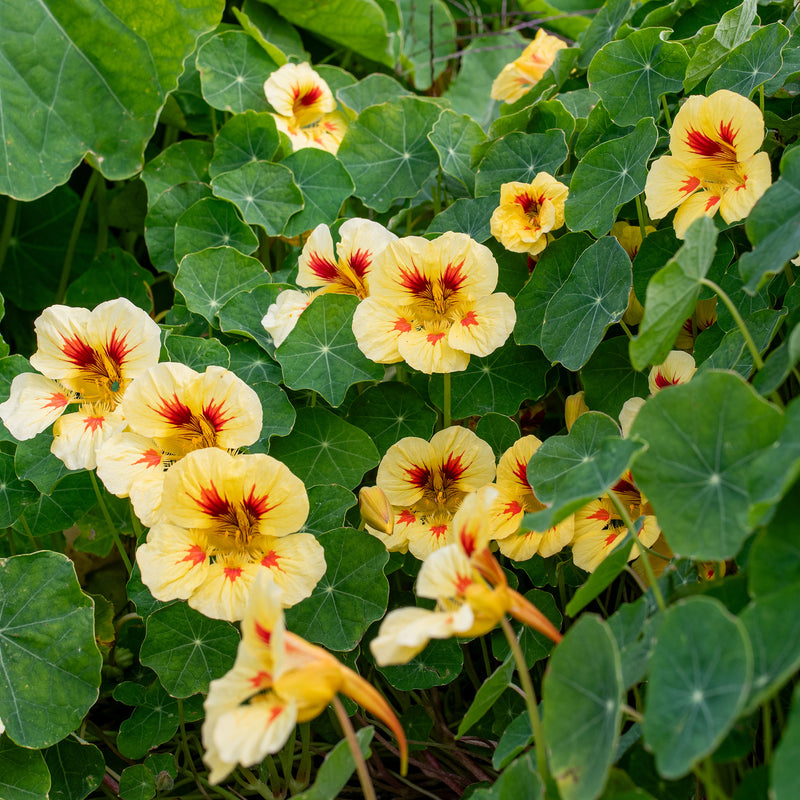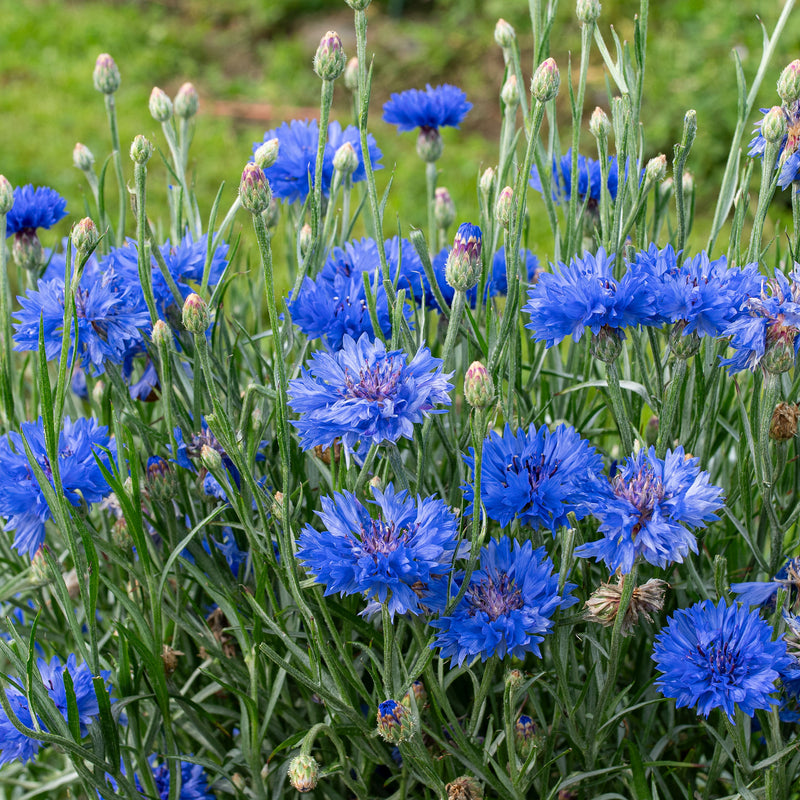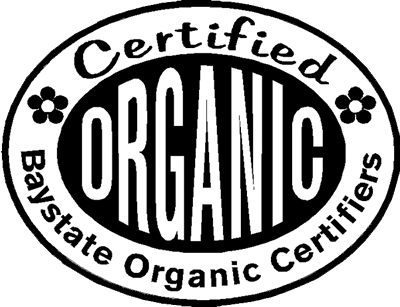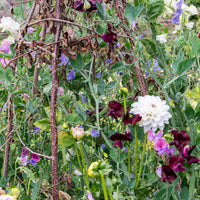Organic Seed
Borage Organic
Borago officinalis
An edible herb lightly flavored with cucumber, sky-blue borage is a delight in summer drinks and salads. Historically used to "gladden the heart" and with legendary medicinal value, it is also a great companion plant in vegetable gardens, attracting bees and beneficial insects. Easy to grow, it blooms in early summer and readily self-sows. Not compliant with the United-States-Canada Organic Equivalence Arrangement (USCOEA) and is not certified organic in Canada.
SKU #S225OG
Growing Companions






























